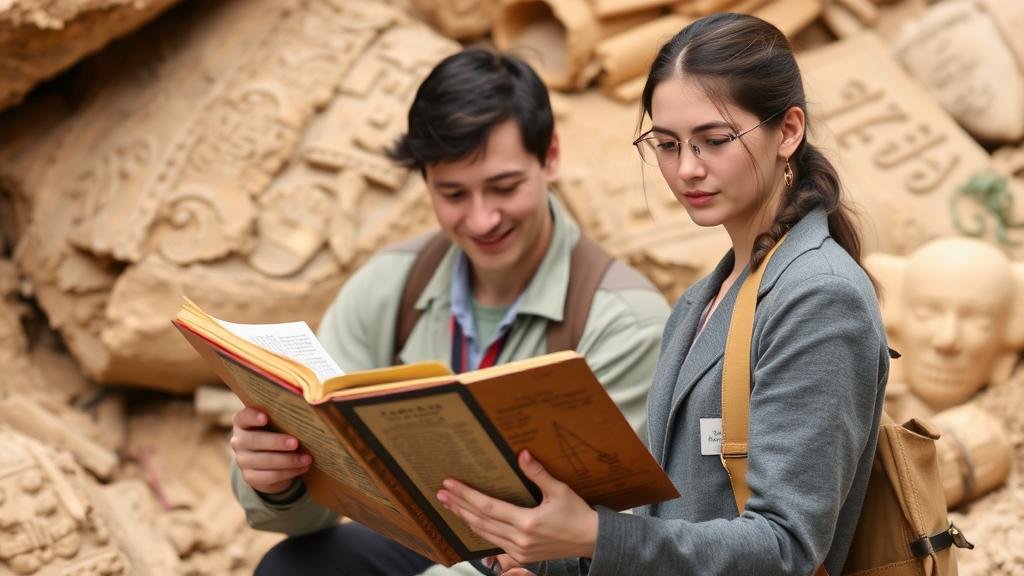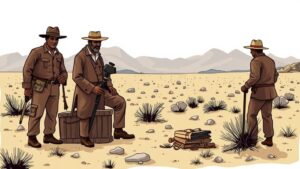Reading First-Person Journals from Archaeological Expeditions for Unexplored Leads
Introduction
Reading first-person journals from archaeological expeditions offers a unique lens through which to explore human history and the methods of uncovering artifacts and sites. These personal narratives not only document field experiences but also reflect the changing perspectives and methodologies within the discipline of archaeology. This article examines how such journals can provide unexplored leads for contemporary researchers by offering insights into past discoveries, cultural contexts, and the dynamics of fieldwork.
Historical Context of Archaeological Journals
The practice of journaling during archaeological expeditions dates back to the 19th century. One landmark example is the journals of Heinrich Schliemann, who excavated the site of Troy in the 1870s. Schliemanns writings, filled with enthusiasm and imaginative interpretations, documented not just the artifacts found but also his theoretical musings on the connections between myth and history.
Another significant figure is Howard Carter, whose journals chronicled the discovery of Tutankhamuns tomb in 1922. His firsthand accounts provide invaluable details regarding the excavation process, the layout of the tomb, and the artifacts retrieved.
The Value of First-Person Accounts
First-person accounts serve multiple purposes in archaeological research:
- Contextualization: They offer context regarding the time, place, and motivation behind significant archaeological efforts.
- Methodological Insights: Journals often detail the methodologies employed, allowing contemporary researchers to assess their own practices against historical precedents.
- Cultural Perspectives: Personal narratives reveal the cultural attitudes and biases of the time, helping modern archaeologists navigate their own interpretations.
Exploring Uncharted Territories
First-person journals can also serve as a guide to unexplored archaeological leads. For example, the writings of early explorers often hint at sites or artifacts that were overlooked or misunderstood. This is particularly relevant in areas where political or environmental changes have occurred, allowing for renewed exploration.
The discovery of Bulkan in the 1990s, an ancient city mentioned briefly in 19th-century expedition notes, illustrates this point. Initial descriptions lacked comprehensive data but hinted at significant unexcavated deposits. Subsequent field schools revisited these locations, leading to the identification of a previously unknown burial ground.
Three notable first-person journals have yielded extraordinary insights for modern archaeologists:
- The Journal of William Lindley (1932): Lindleys accounts of his expeditions in the American Southwest provided clues about unrecorded Puebloan sites, which initiated further explorations now recognized as key archaeological deposits.
- Field Notes of Mary Leakey (1960s): Through her comprehensive journal entries on early hominins in East Africa, Leakey documented not only the findings but also the stratigraphy that informs our understanding of human evolution.
- The Diary of Sir Leonard Woolley (1922): Woolleys field notes on the Ur excavations described lost artifacts and the implications of their findings for understanding Sumerian civilization that continue to inspire ongoing research.
Analyzing Methodologies through Journals
There is an intricate relationship between the evolution of archaeological methodologies and the insights provided by first-person accounts. Early methods, often informal and based on personal whims, have developed into systematic, scientifically validated procedures. Reading these journals highlights this progression and raises questions about current practices.
For example, the transition from simple excavation techniques to stratigraphic analysis can be traced back to early practitioners who noted the importance of context in artifact recovery, as seen in the early documents of Lewis Binford in the 1960s.
Conclusion
First-person journals serve as a bridge connecting the past to the present in the field of archaeology. offer not only significant historical documents but also unexplored leads and methodologies to contemporary archaeologists. Engaging with these accounts enhances understanding of cultural practices, excavation strategies, and the evolution of archaeological thought.
Future research should prioritize the systematic analysis and digital preservation of these journals to ensure they remain accessible for new generations of archaeologists, thereby continuing to inform and inspire the discipline.
Actionable Takeaways
- Researchers should actively seek out and analyze historical journals to enhance their understanding of site-specific contexts.
- Integrating methodologies from past accounts may provide fresh perspectives on current archaeological practices.
- Cultivating an awareness of biases in historical journals can improve the quality of interpretations in contemporary research.



